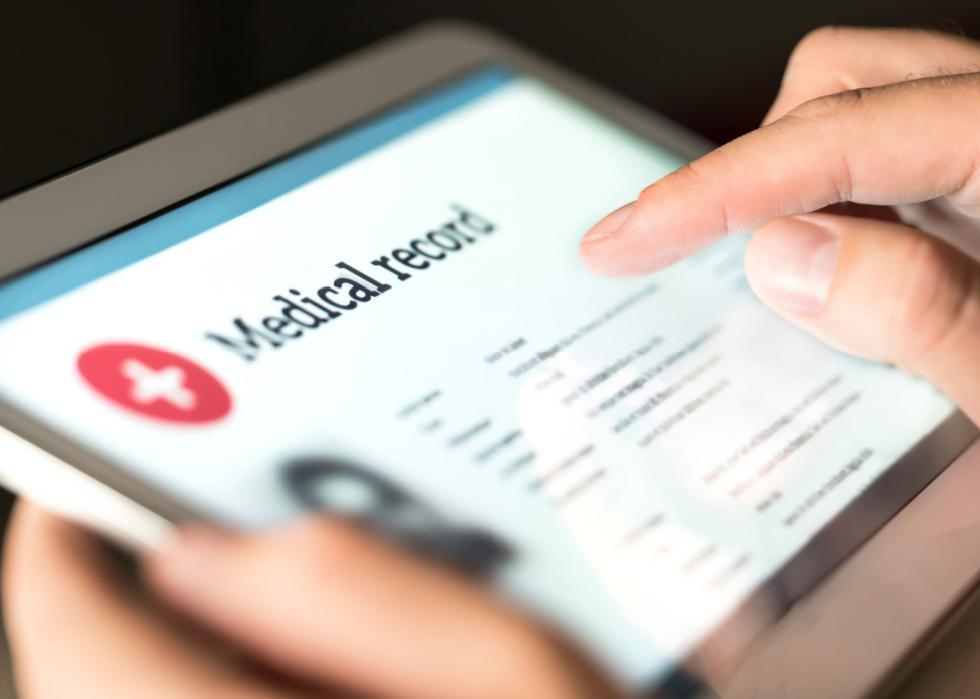
This story originally appeared on Soundry Health and was produced and distributed in partnership with Stacker Studio.
7 ways doctors and nurses are using AI
Artificial intelligence has the potential to make work more efficient through automation. In the health care industry, AI-backed tools can help doctors, nurses, and researchers quickly sift through data and analyze results to improve research and patient care.
However, some industry executives are not as convinced. The health care industry struggles with AI use, particularly around data privacy, safety, and government regulation. Health care workers are also worried that technology could make errors in its recommendations and harm patients. While AI tools are evolving, they're only as good as the data that's been used to teach them—and they're nowhere near having true human-level intelligence, according to a CNBC report.
Health care professionals remain cautious. Nearly half are unsure or unconvinced that AI will be safe for diagnosis, patient care, and medication suggestions by 2028, according to the American Hospital Association.
That said, AI is gaining traction in the industry for certain tasks. Soundry Health analyzed news reports and academic papers to illustrate the state of artificial intelligence in the daily work of doctors and nurses. While AI offers huge potential for efficiencies that could save lives, many of the innovations coming to health care settings focus on alleviating burnout and turnover in a tough line of work historically plagued by mounds of paperwork.

Less time note-taking, more time with patients
AI-powered software platforms are taking over the task of note-taking during patient visits, which supports doctors both during and after patient visits. Apps can record and automatically generate transcriptions of patient visits, which allows doctors to focus on their patients rather than their screens. AI-generated transcripts also cut down on the amount of time doctors take to document patient visits after hours, which contributes to lower burnout.

Health records that talk to your doctor
Oracle is using AI in its Clinical Digital Assistant tool—slated to be available in 2024—which relies on voice commands to interact with electronic health records. During patient visits, doctors and nurses can access and update information verbally, which allows them to focus more on patients. Patients can also use the voice-enabled platform to book appointments, ask questions, and check their records without having to type their requests into a computer or app.

Automating administrative tasks
Both clinicians and administrative staff spend an enormous amount of time on paperwork; the Annals of Internal Medicine estimates that physician burnout due to administrative tasks costs $4.6 billion a year. Many of these tasks could be automated with AI, as algorithms can analyze and understand tasks and workflow to better identify where and how clinicians can offload some of their administrative tasks to free up more time. Health care systems can also use AI to understand the workflows and processes of administrative staff who focus on billing and insurance claims.

Algorithmic diagnoses
AI's ability to quickly analyze and synthesize data within a patient's electronic health records can help doctors make more informed decisions about their care. According to the American Hospital Association, AI has outperformed the modified early warning system, a scoring tool nurses use to detect whether a patient's condition will rapidly deteriorate. AI algorithms also improve doctors' efficiency in disease diagnosis due to their ability to quickly analyze medical images and patient data.

Harnessing machine learning and synthetic data to predict and improve care
Innovation in health care comes from studying data, but privacy laws make it difficult to use actual patient data with AI systems. That limits broader uses within the industry, such as for policy development, evaluating the effectiveness of health screening, teaching machine learning models, and predicting disease outbreaks.
Synthetic data is an alternate approach. A synthetic dataset can just be real patients' data, without any identifying information. But synthetic data systems can also perform statistical analyses on confidential patient information, and then generate all new data with the same statistical properties and conclusions, without any connection to real people. While there's concern that synthetic datasets produce biases, they can help researchers test hypotheses, methods, and algorithms before they use actual data.

Lowering the cost of drug discovery with generative AI
It takes an average of 14.6 years and $2.6 billion to bring a new drug to market, according to a 2023 study from Heliyon, but AI can make that process faster and easier. This includes machine learning analysis of the 20,000 human proteins that could potentially be targeted for future drugs, AI-based clinical trial outcome prediction, and natural language processing that efficiently sifts through scientific literature to gather information on a drug's adverse effects. Scientists have leveraged AI tools to develop Zomig, which treats migraines, as well as new antibiotics and COVID-19 vaccines.

Improving clinical trials
It's hard to find enough people to participate in trials for new drugs, which causes delays in about 80% of clinical trials, according to the Journal of Medical Internet Research. Natural language processing has emerged as an option to automate the traditionally one- to two-hour-per-patient manual process of reviewing medical records—particularly written notes—to match patients with available trials, the Center for Connected Medicine has found.
Additional research by Dom DiFurio. Story editing by Jeff Inglis. Copy editing by Tim Bruns. Photo selection by Clarese Moller.



